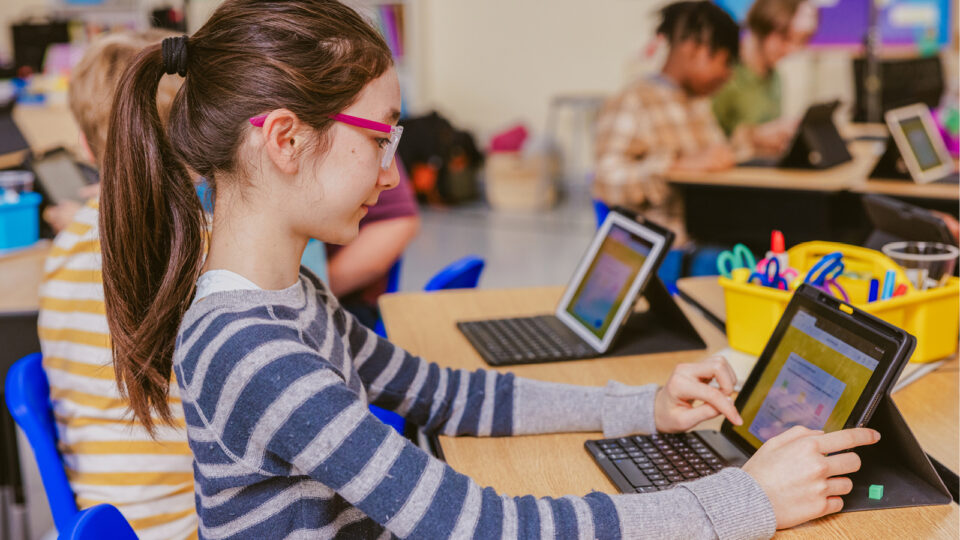As someone who’s passionate about how technology can revolutionize education, it’s exciting to witness the shift from conventional teaching methods to more interactive, personalized, and accessible learning experiences. In this article, we’ll explore the impact of school technology on modern education, the tools and innovations paving the way for smarter classrooms, and how these advancements are preparing students for the future.
The Rise of Technology in Education

The integration of technology into schools is not just a trend—it’s a fundamental shift in how learning takes place. Today’s students have grown up in a world filled with technology, and as a result, they expect the tools they use for learning to be just as innovative and engaging as those they use in their daily lives.
Digital learning tools are increasingly becoming an essential part of the educational experience. Whether it’s interactive whiteboards, smartphones, or cloud-based platforms, technology provides educators and students with the ability to learn, collaborate, and engage in new ways that were previously impossible.
1. Smarter Classrooms: The Role of Interactive Technology
One of the most exciting aspects of school technology is the evolution of the classroom itself. Gone are the days of static chalkboards and one-size-fits-all lessons. Today’s classrooms are becoming more interactive, collaborative, and personalized. A key part of this shift is the use of interactive whiteboards, smart boards, and touchscreen devices.
Key Features of Smarter Classrooms:
-
Interactive Whiteboards: Smart boards allow teachers to create dynamic lessons that incorporate multimedia elements like videos, interactive diagrams, and real-time internet access. These boards can be used to present information, but they also allow students to interact directly with the lesson, making learning more engaging.
-
Tablets and Laptops for Every Student: Many schools are moving towards 1:1 technology programs, where every student has access to a personal tablet or laptop. These devices allow students to access digital textbooks, collaborate on projects, and explore educational apps that enhance learning in ways traditional methods can’t.
-
Classroom Apps and Software: Various educational apps are helping teachers create interactive assignments, track student progress, and offer personalized learning experiences. Tools like Google Classroom, Seesaw, and Edmodo have become essential for organizing lessons, distributing materials, and communicating with students.
-
Digital Assessment Tools: Instead of relying on traditional tests and quizzes, teachers can use digital assessment tools that provide instant feedback to students. These tools often incorporate gamification and adaptive learning technologies, offering assessments tailored to each student’s skill level.
With these technologies, classrooms are becoming more interactive, allowing students to take ownership of their learning and collaborate with peers in new and exciting ways.
2. Personalized Learning: Tailoring Education to Individual Needs
One of the greatest advantages of school technology is its ability to provide personalized learning experiences. No two students learn the same way or at the same pace, and technology can help bridge these differences by offering adaptive and customized lessons.
Key Elements of Personalized Learning:
-
Adaptive Learning Platforms: Technologies like Khan Academy, DreamBox, and Smart Sparrow use algorithms to adjust content based on each student’s strengths and weaknesses. These platforms provide real-time feedback, enabling students to learn at their own pace and master topics before moving on.
-
Learning Management Systems (LMS): An LMS like Moodle or Canvas allows teachers to tailor the curriculum to individual student needs. These systems can track student performance and provide analytics, helping educators identify areas where students may need additional support.
-
Gamified Learning: Incorporating gamification into education is a growing trend. Educational games, badges, and leaderboards can motivate students to engage with the content and take charge of their learning. Games like Classcraft make the learning experience more enjoyable while still delivering academic content.
By offering personalized experiences, technology ensures that every student has the tools they need to succeed, regardless of their learning style or pace. This approach encourages a deeper understanding of subjects and promotes greater student agency.
3. Collaboration and Connectivity: Fostering Communication in the Classroom
School technology is not only about delivering content but also about fostering collaboration. The ability for students to connect with each other, with teachers, and with external experts and resources enhances the learning experience and prepares students for the collaborative nature of the modern workforce.
Key Features of Collaborative Learning:
-
Cloud-Based Platforms: Platforms like Google Drive, Microsoft Teams, and Slack enable students to collaborate on projects, share resources, and communicate with teachers in real-time. These platforms allow students to work together on documents, presentations, and spreadsheets, even if they are physically apart.
-
Video Conferencing: With tools like Zoom and Google Meet, students and teachers can have virtual classes, bringing in guest speakers or collaborating with peers from other schools or countries. These tools have expanded learning beyond the classroom, allowing for a global exchange of ideas and perspectives.
-
Social Media for Learning: Many schools are now incorporating social media into the learning process. Whether it’s through creating private Facebook groups, sharing ideas on Twitter, or blogging on platforms like WordPress, students can communicate and share information in creative and engaging ways.
-
Interactive Learning Projects: With the use of technology, students can engage in project-based learning where they collaborate to create presentations, videos, websites, or even apps. These projects teach students valuable skills like critical thinking, teamwork, and problem-solving.
By encouraging collaboration and communication, technology fosters a community of learners who can engage, share, and grow together.
4. STEM Education: Preparing Students for the Future
One of the areas where technology is having the most significant impact is in STEM (Science, Technology, Engineering, and Mathematics) education. These fields are essential to the future workforce, and technology is playing a key role in ensuring that students are prepared for the challenges and opportunities in these areas.
Key Features of STEM-Focused Technology:
-
Coding and Robotics: Students are learning how to code, build robots, and understand the fundamentals of technology at an earlier age. Programs like Scratch, LEGO Mindstorms, and Arduino are helping students develop coding and problem-solving skills in a fun and interactive way.
-
Virtual and Augmented Reality: VR and AR are becoming important tools for teaching complex STEM concepts. Students can explore virtual labs, dissect virtual organisms, or even take trips to outer space—all from the classroom.
-
3D Printing: Schools are integrating 3D printing into STEM lessons, allowing students to design and create models of structures, objects, or even prototypes, which enhances creativity and technical skills.
-
Interactive Simulations: Platforms like PhET Interactive Simulations provide students with virtual labs and interactive learning modules that help them explore complex concepts in physics, chemistry, and mathematics in a hands-on, engaging way.
By incorporating these technologies into the curriculum, schools are equipping students with the skills and knowledge they need to excel in the digital and technological future.
5. Ensuring Equity: Access to Technology for All Students
As inca broadband technology plays an increasingly central role in education, it is essential to ensure that all students have access to the tools they need to succeed. This includes addressing the digital divide by providing access to devices, internet connectivity, and training for students from all backgrounds.
Initiatives to Ensure Equity:
-
1:1 Device Programs: Many schools are implementing 1:1 programs, where every student is provided with a personal device like a laptop or tablet. This ensures that all students, regardless of socioeconomic status, have the tools they need for learning.
-
Affordable Internet Access: Some schools and governments are working to provide affordable or free internet access for students who lack high-speed internet at home, ensuring that all students can participate in online learning and access digital resources.
-
Technology Training for Teachers: Equally important is ensuring that educators are equipped with the skills to integrate technology effectively into their teaching. Professional development programs are essential for helping teachers make the most of the tools available.
Ensuring equitable access to technology is critical to creating an educational environment where every student has the opportunity to thrive.
Conclusion: Building a Future-Ready Education System
School technology is not just about incorporating the latest gadgets or software; it’s about creating a learning environment that is adaptable, engaging, and future-ready. From interactive classrooms and personalized learning to collaborative tools and STEM innovations, technology is transforming how we teach and how students learn.
As we look toward the future, it’s clear that the integration of technology in schools will continue to shape education, ensuring that students are prepared for the demands of the 21st-century workforce. By leveraging these innovations, we’re building an education system that is not only smarter but also more inclusive, interactive, and dynamic—empowering students to succeed in an ever-evolving world.
Read Also About : High-Quality Education
Providing high-quality education resources is fundamental to ensuring that every student has the opportunity to succeed, regardless of their background. Whether it’s access to advanced learning materials, experienced teachers, or state-of-the-art technology, equitable access to resources helps level the playing field and supports all students in reaching their full potential. In this article, we’ll explore key strategies for ensuring that every student has the resources they need for a high-quality education and how schools can implement these strategies effectively.



